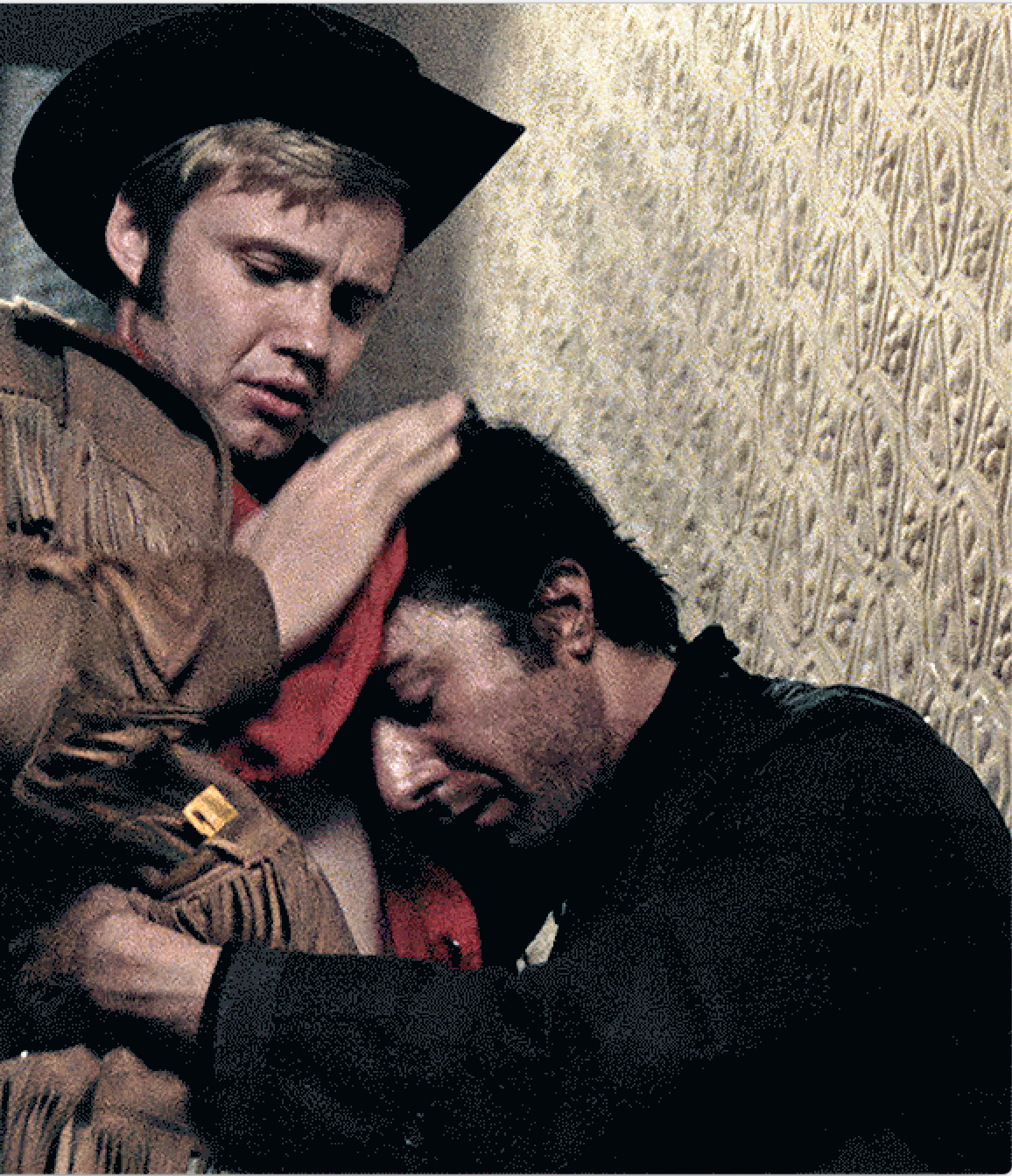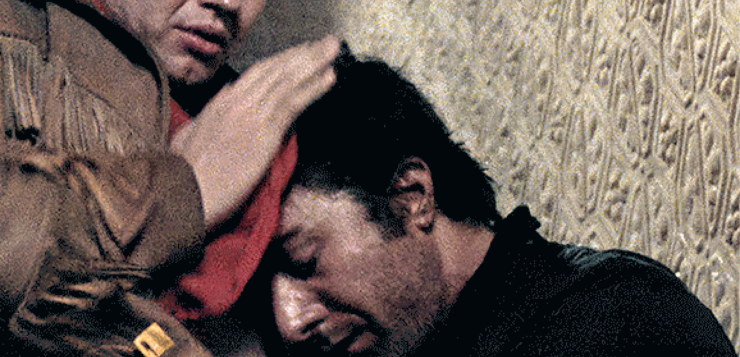JOHN SCHLESINGER’S Oscar-winning movie Midnight Cowboy (1969) was an extraordinary achievement for its time: a film that depicted a loving, albeit nonsexual, relationship between two young men. It was also the first time an “X-rated” American film received the Best Picture Award from the Motion Picture Academy. (Significantly, the award was presented by Elizabeth Taylor.) At the same time, the cinematic context of this bromance reveals the lengths to which the writers and producers went to “justify” the relationship to an audience that was either hostile to or ignorant of gay people and their identities.
These efforts are revealed by the way in which the award-winning screen adaptation made significant changes from the gritty 1965 novel by James Leo Herlihy on which it was based. The basic outline of the film is true to the plot of the novel: the arrival of a young Texas hustler in New York City; his failure to make it with women and his turn to soliciting gay men; and his relationship with “Ratso” Rizzo, a crippled, smalltime grifter. But much of the film’s back story, told by means of flashbacks, is significantly different from the book. Herlihy’s depiction of Joe, the “Cowboy” in the title, is considerably more complex and elaborated in the book than in the movie version. In the novel, Joe is ambiguous about his sexuality from the outset. His childhood is marred by an unstable mother who abandons him, leaving him to live with his grandmother. Although he has sex with women, he’s also attracted to men. In one incident, while visiting a whorehouse, he’s raped by two men: the gay friend who accompanied him and the son of the madam. This proves to be a turning point for Joe, who thereafter has sex with both men and women.

What screenwriter Waldo Salt did in the screen adaptation was to eliminate much of the early depiction of Joe’s life and concentrate instead on his time in New York City and his relationship with Rizzo. Still, he preserved two key elements as explanations for Joe’s ultimate gay identity: his relationship with his broken family, and the whorehouse rape, though this occurs under changed circumstances in the movie. In effect, what Salt did was to provide two clichéd explanations for Joe’s behavior. The first was the then popular Freudian explanation of homosexuality as an unhealthy relationship with a controlling and possibly seductive mother—a concept known as “Momism.” The second was the growing awareness of sexual abuse and its capacity to inflict permanent psychic damage on young people.
Furthermore, in trying to shelter the intense friendship and amorous relationship between Rizzo and Joe from any obvious implication of homosexuality, Salt separated the act of sex from love and friendship as if they were entirely separate categories. All of Joe’s sexual encounters in New York (there are flashbacks to a brief romance with a gal in Texas) are based on a potential or actual cash transaction. There is also one interesting depiction of the city’s gay underworld, though for some unexplained reason Joe meets up with a woman there who pays him for sex. But even in this instance, there are complications (borrowed from the novel). Back in the woman’s apartment, Joe fails to perform and the woman suggests that he can’t because he’s gay. When he finally succeeds, she happily pays him.
Released in 1969, the year of the Stonewall Riots, and garnering considerable attention in the media and recognition from the major film award organizations, Midnight Cowboy was a remarkable achievement for its time. No doubt Hollywood, with its sex-positive and gay-friendly outlook relative to the rest of America, was sending a message by giving this film so many awards. Dustin Hoffman’s cynicism and John Voight’s ingenuousness worked perfectly together, though neither actor received an Oscar. As in Brokeback Mountain (2005), which is set in 1963, the relationship between the two men ended in a death, as if to say that this is a kind of love that cannot survive in the existing world—which is, after all, a theme of many great dramas. What made both of these films memorable and important was their honest depiction of a love that was struggling to speak its name in postwar America.
James Gilbert is the author of four novels, of which the latest is Murder at the Olympiad.






